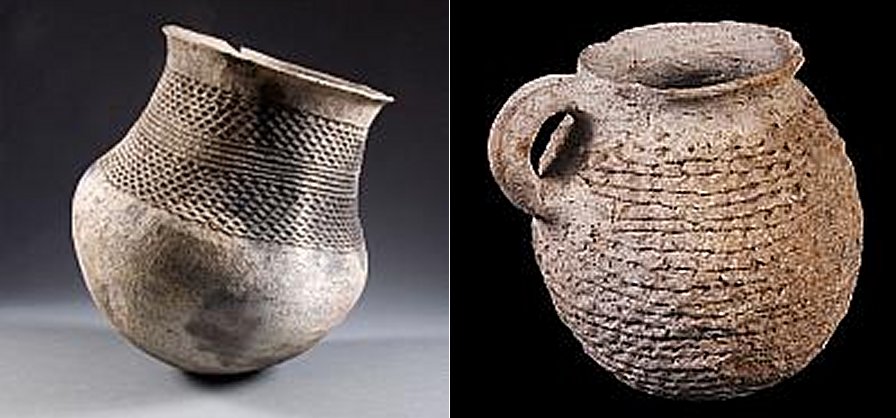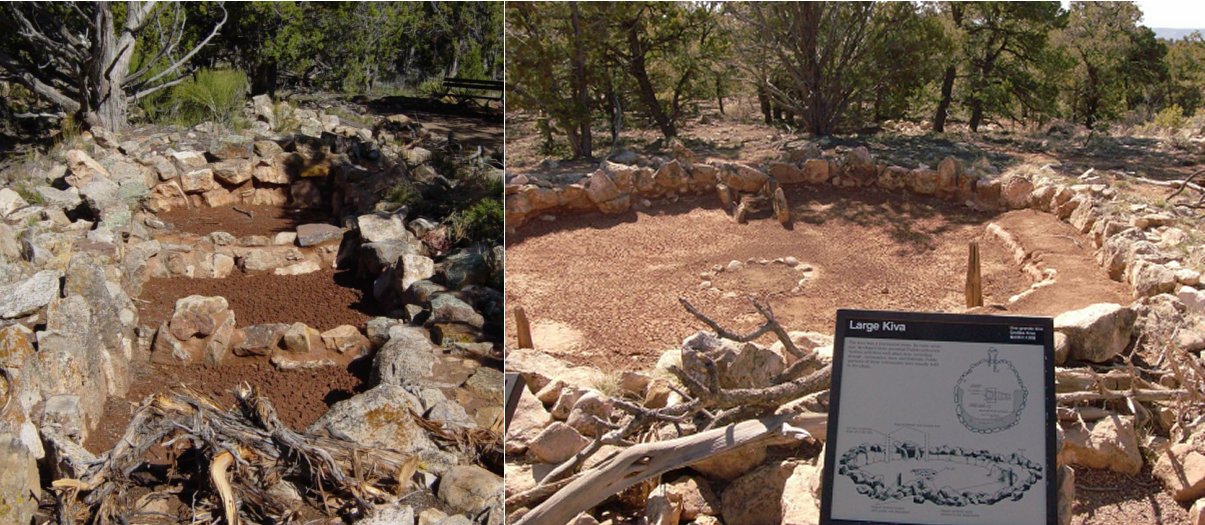MessageToEagle.com – People have continuously occupied the Grand Canyon for at least the past 4,000 years, and they have lived in the region for the past 12,000 years. As many as 4,800 archaeological sites have already been documented, but many more still remain to be cataloged.
Over the centuries people have come and gone in and around the Grand Canyon area, occupying it for extended periods of time or staying there only briefly.
One group that established roots at the Grand Canyon were the Ancestral Puebloans, who are believed to be relatives of the modern day Zuni, Hopi and other Puebloan tribes.

The Tusayan Ruins (also known as ‘Tusayan Pueblo’) are the remains of a small 12th century Ancestral Puebloan village site located within Grand Canyon National Park, Arizona. It is one of the best documented archaeological sites of the region.
The ruins are considered to be one of the major archeological sites in Arizona.
Both the ruins of the village and the local Tusayan Museum that displays pottery, seashell bracelets, corncobs, arrowheads along with original split-twig figurines, give us an insight into the lives of a thriving Anasazi community with rich history.

Historians believe that the Tusayan settlement numbered only about 30 people and was in occupation for only a quarter of a century.
They made their own tools, whether for cooking or hunting, from stone, bone and antler. Stone grinders were used by them to grind corn and stone arrowheads were used as weapons.
The so-called split twig figurines (image above) date back 2,000 to 4,000 years. They were not found at Tusayan Ruin itself, however, these artifacts were discovered in many other caves in the Grand Canyon. They provide a proof of the long human presence at the Grand Canyon and its use by Native Americans.
See also:
Buhl Woman Of Idaho: One Of The Oldest Skeletons In North America
Bandelier National Monument: Unusual Ancient Ruins Of Pueblo People In The Southwest
The ‘Anasazi’ Mystery: Sophisticated Civilization That Disappeared
Sophisticated Masonry In Anasazi Dwelling Ruins At Mesa Verde National Park, Colorado, USA
The ‘Tusayan Pueblo’ settlement consisted of a central plaza surrounded by living quarters, kivas and storage rooms. The plaza faced south to catch the sun during cooler seasons. The living quarters consisted of a single story of rock, adobe, and wood with about 3 or four main rooms. Storage rooms held food that was dried to preserve it during harsh winter months.
The only source of transportation for these Anasazi people was by foot. Everything that these people ate had to be gathered, harvested, or killed by them.
Among ruins there are still preserved ceremonial structures, that modern Puebloans use even today in diverse festivals and religious ceremonies. The structures are believed to represent the Sipapuni, a geological feature on the floor of the Grand Canyon that many Hopi believe is the place where they entered into this world.
These people lived during the Pueblo II Period (900 AD to 1150 AD), which was the second pueblo period of the Ancestral Puebloans of the Four Corners region of the American southwest. They managed to survive into the Pueblo III era, an important period in development of Puebloan communities, which gradually began to build multi-storied pueblo, or cliff-side talus house communities and lived in large cliff-dwellings.
Copyright © MessageToEagle.com This material may not be published, broadcast, rewritten or redistributed in whole or part without the express written permission of MessageToEagle.com
Expand for referencesReferences:






